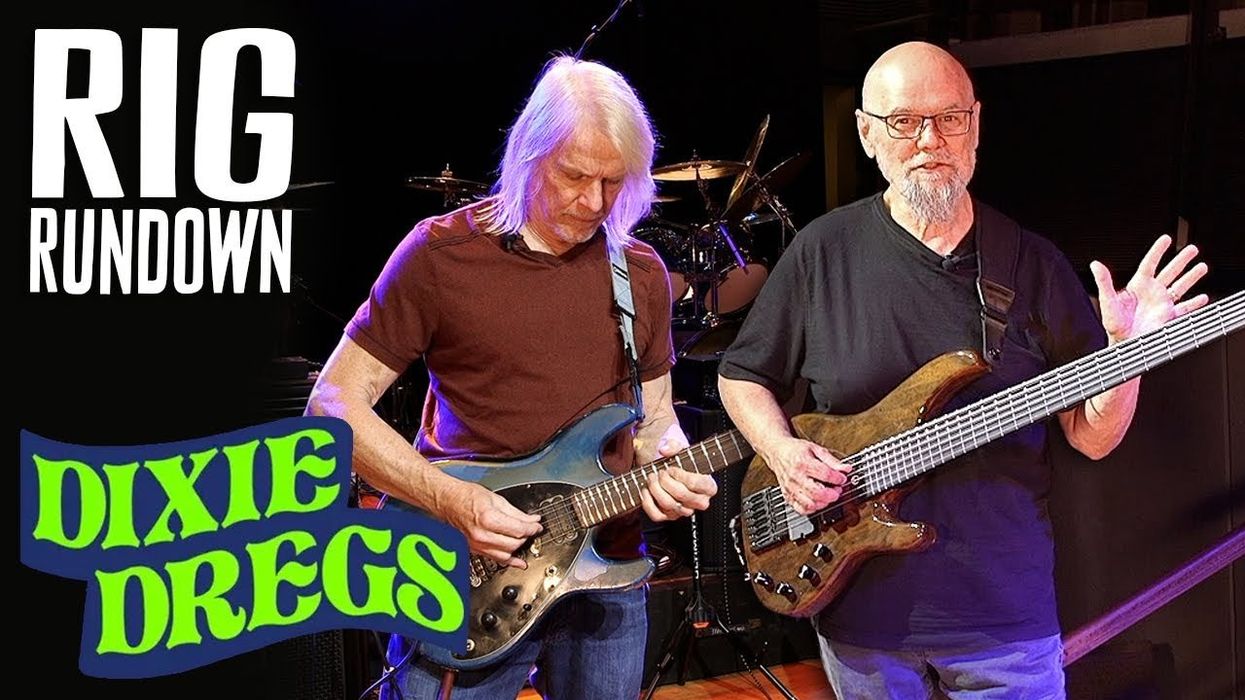Guitar and bass legends Steve Morse and Andy West showcase their contrasting rigs—two amps vs. no amps—and custom instruments on a Dregs reunion tour date in Nashville.
Steve Morse and Andy West are legendary players. In addition to co-founding the Dixie Dregs together in Augusta, Georgia, in 1970, both virtuosos have colorful personal resumes.
Guitar giant Morse’s is more high-profile. He remains the leader of the Steve Morse Band, who opened the Dregs’s late April show at Nashville’s CMA Theater, where this Rundown was filmed, with 45 minutes of smart shred. He’s also been a member of Kansas and Deep Purple, as well as another instrumental powerhouse, Flying Colors.
Besides his tenure in the Dregs, West has recorded with Vinnie Moore, the Steve Morse Band, Paul Barrere, and Henry Kaiser, with whom he’s been a member of the Mistakes, Crazy Backwards Alphabet, and Five Time Surprise, which also includes Messthetics guitarist Anthony Pirog. (Full disclosure: I recorded a version of Steppenwolf’s “The Pusher” with Kaiser and West as part of Kaiser’s Moods & Modes of Halloween video quarterly in 2023.)
The Music City show was classic Dixie Dregs, with more than two hours of high-wire playing, all anchored by the bold melodies that mark their compositions. Joined by longtime Dregs drummer Rod Morgenstein, violinist Allen Sloan, and special guest and former Dregs keyboardist Jordan Rudess, now from Dream Theater, the concert was an affirmation of Morse and West’s vitality and musical partnership after sharing stages for more than 50 years.
In the video, Steve and Andy explain their rigs in person and in detail. Their setups:
Brought to you by D'Addario:
https://ddar.io/wykyk-rr
The Warhorse
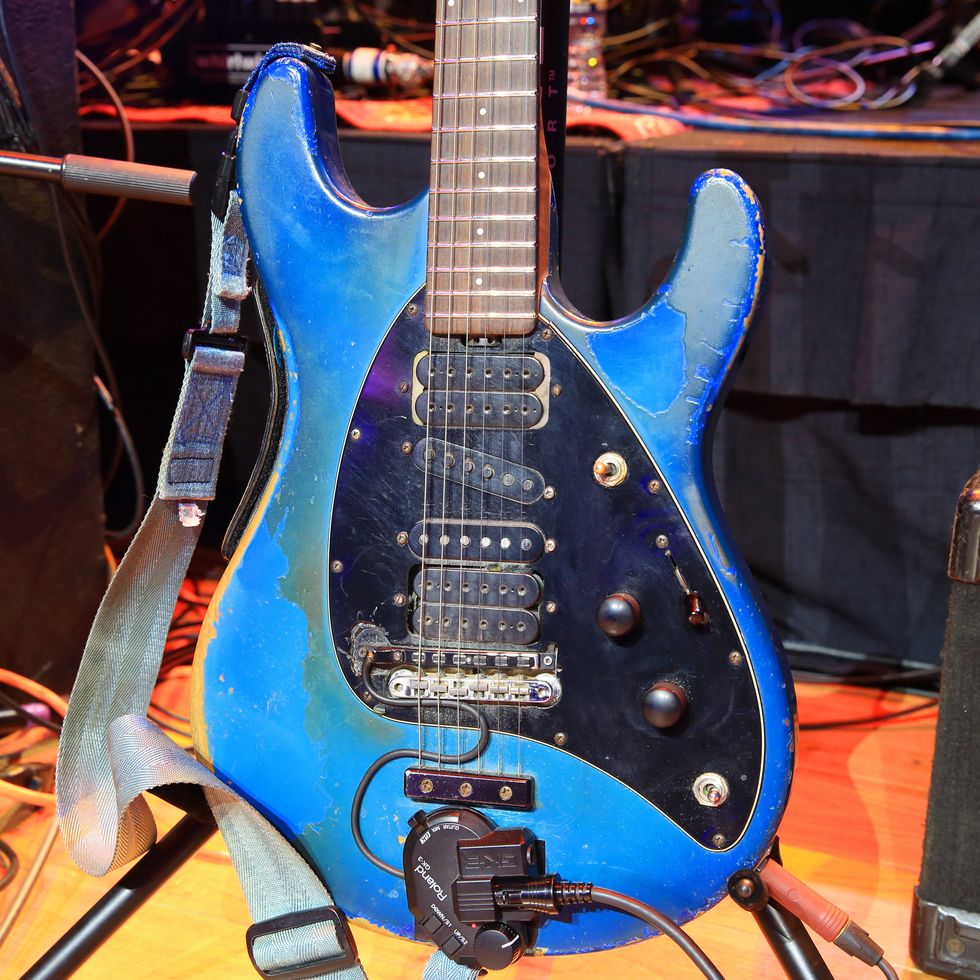
Steve’s number one guitar is literally serial No. 1—the first Steve Morse signature model to come out of the Ernie Ball Music Man shop in 1985. Its appointments include a Tune-o-matic bridge with thumbwheel height adjustment, a roasted maple neck, Schaller tuners, a graphite-acrylic-resin-coated body cavity and aluminum-lined pickguard, master volume and a highly responsive tone control, 22 frets, and DiMarzio’s Steve Morse signature pickups. Two toggles control his mix of humbuckers and single-coils. The wear makes this instrument a thing of beauty—it’s clearly, like its owner, led a storied life. At the headstock, you’ll notice a homemade foam mute (with Ernie Ball’s name on it) that Steve fashioned to compensate for the arthritis that makes it painful to bend his hand. That said, it doesn’t seem to slow him down a bit.
The Mute
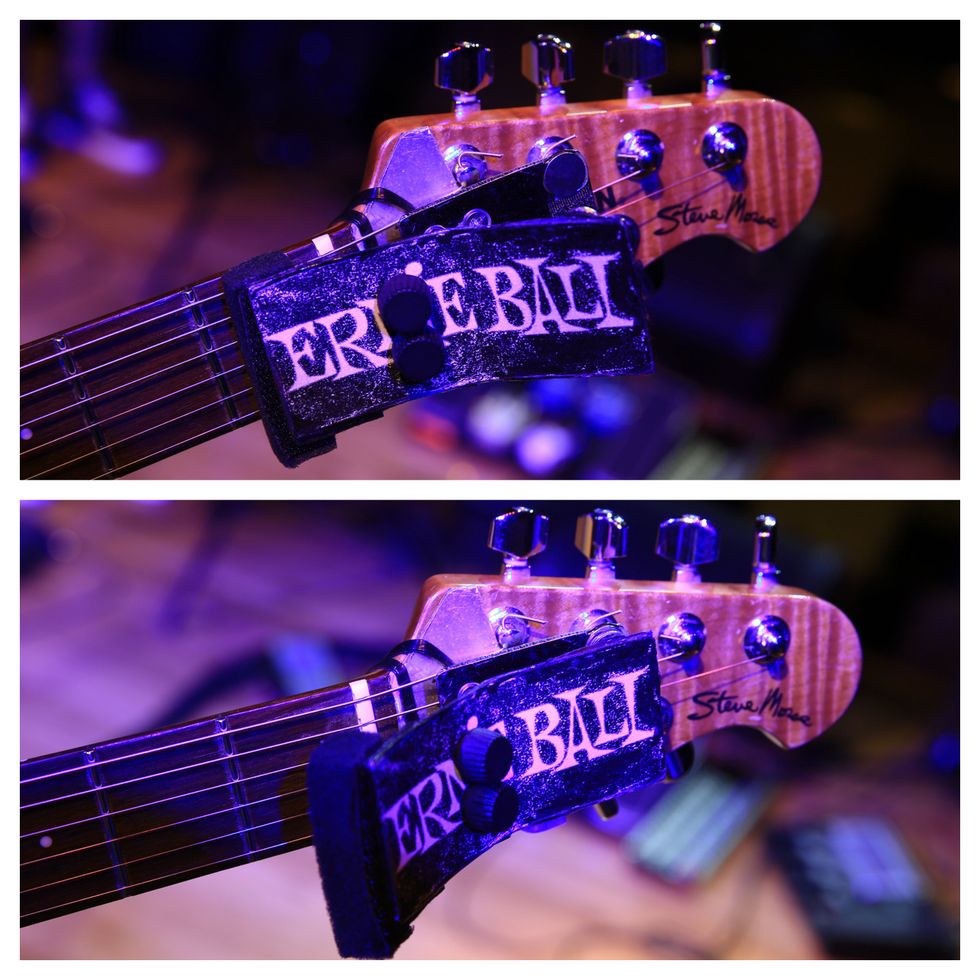
Here’s a close-up look at Steve’s handmade mute. Currently, it’s in muting mode. Flip it up and the strings ring open.
Next!
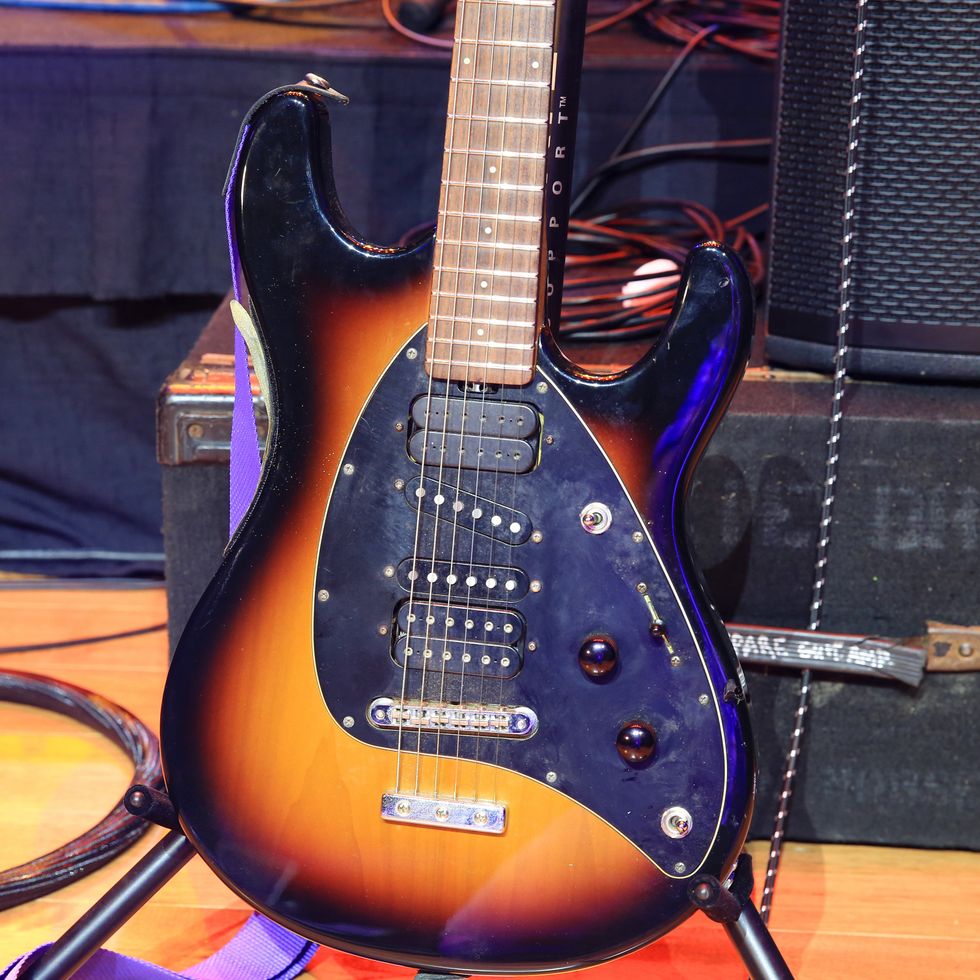
Steve’s backup signature model has a little more chunk in its voice, and the neck pickup has more clarity, he tells us. “I could pick it up and play it all night long.” He is using Ernie Ball Paradigm Slinky strings, gauged .009–.042. And his picks are flexible nylon Ernie Balls with a serrated edge. “The hard celluloid picks really impact my wrist,” he says.
Synth-tillating!
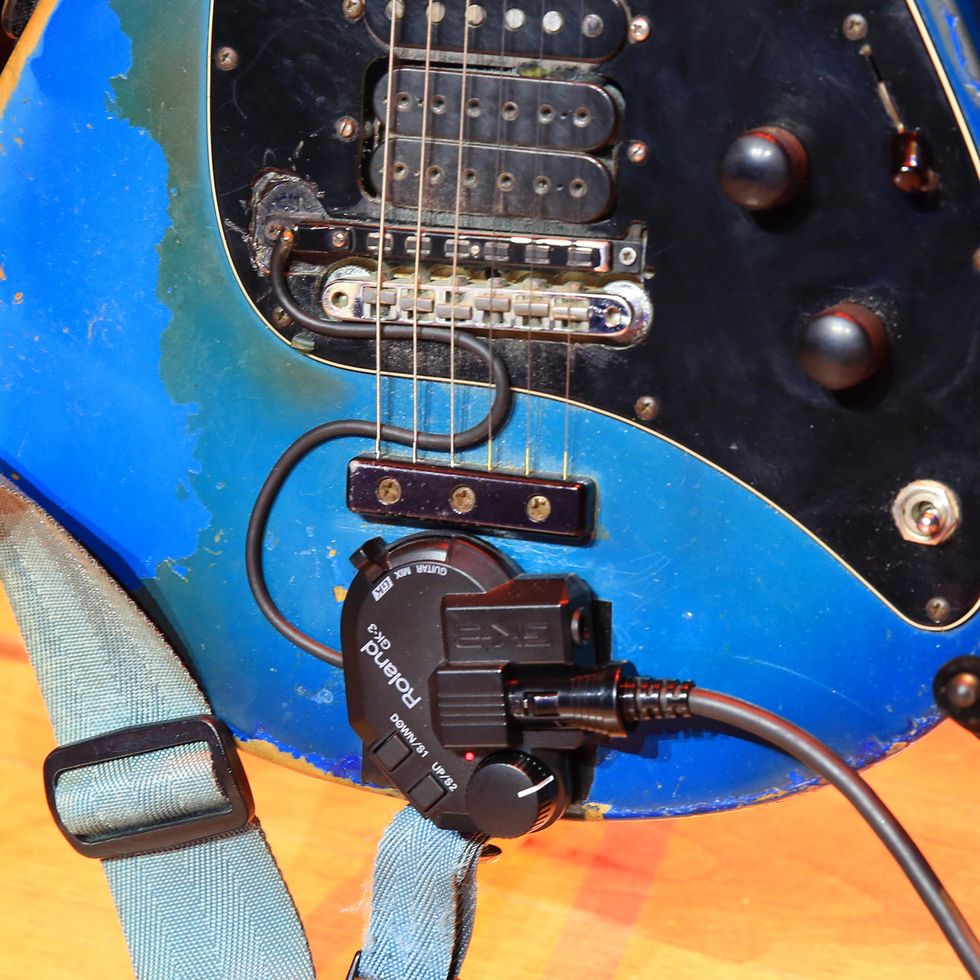
There’s a Roland GK-3 divided pickup at the heel of Steve’s main axe, so he can use a synth to add strings and pads to accompany himself as he plays in the Steve Morse Band.
The Engl's Have Landed
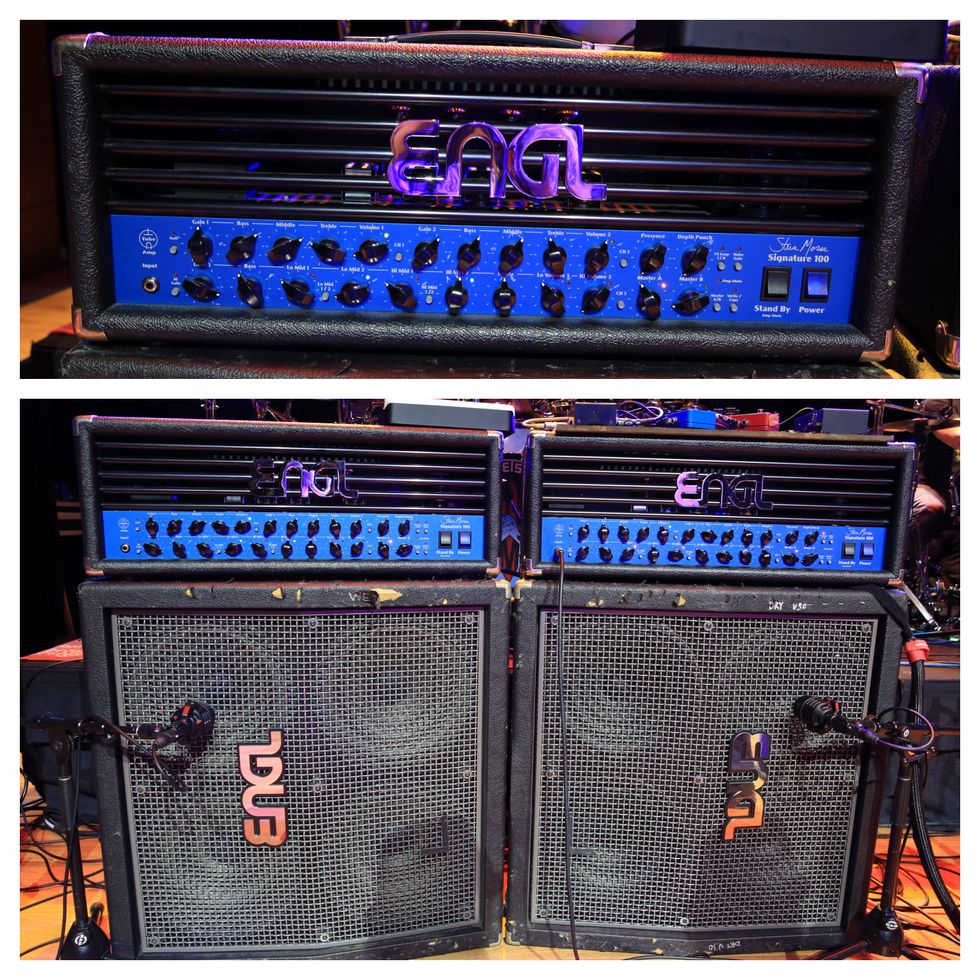
Steve plays through a pair of 3-channel Engl Steve Morse signature 100-watt amps—one wet, one dry—but his volume can go down to a whisper without losing a bit of tonal depth thanks, in part, to the amps’ careful tube interaction and circuitry. In fact, Steve says he can play his nylon-string acoustic guitar through these powerhouses. He keeps the amps on their sides to disperse the sound to the left and right.
Stack of Synths
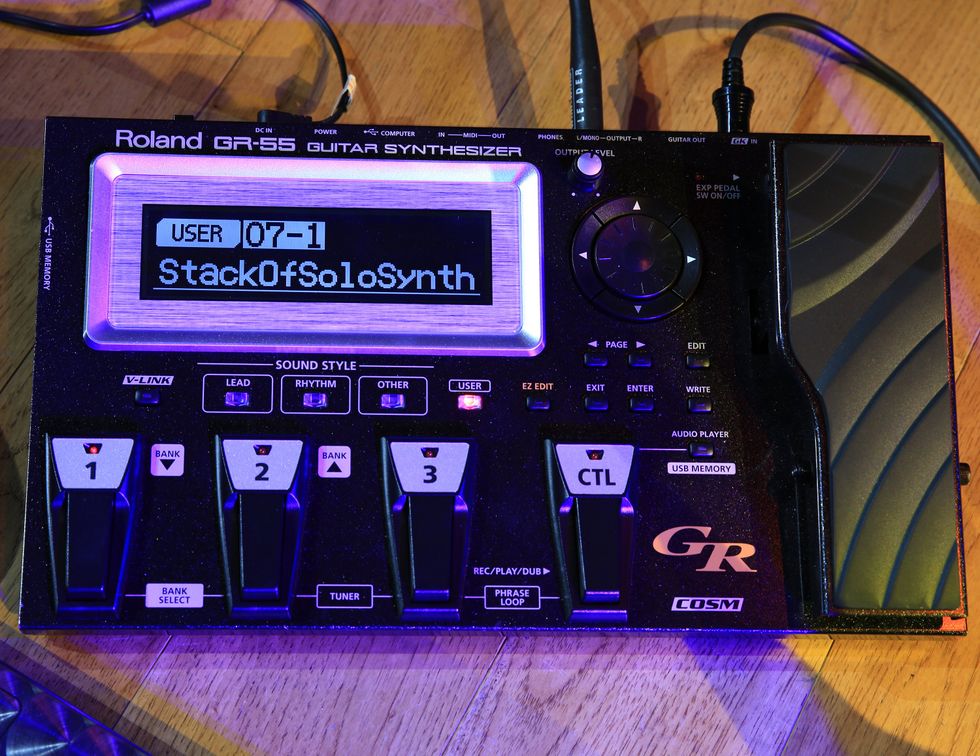
And Steve’s synth of choice is the Roland GR-55. It comes stock with 910 tones, 93 effects, and three foot-pedal controllers.
Pedal On!
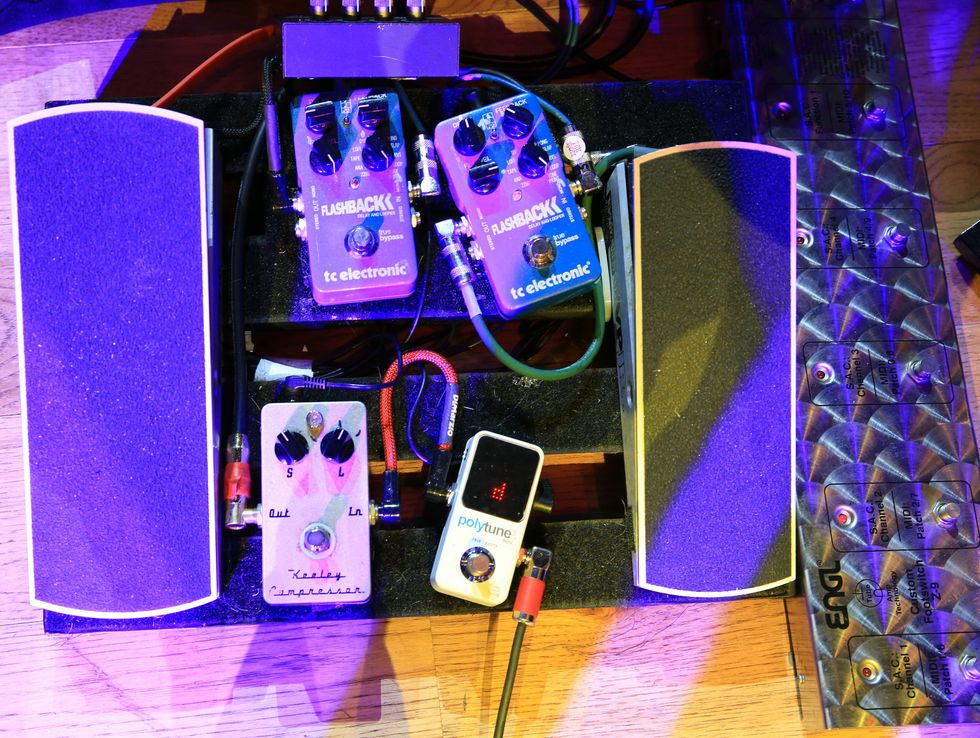
His pedal chain is a Keeley Compressor, two Ernie Ball volume pedals, two TC Flashbacks, a Korg Polytune, and a foot controller for his 3-channel Engls.
Wet or Dry?
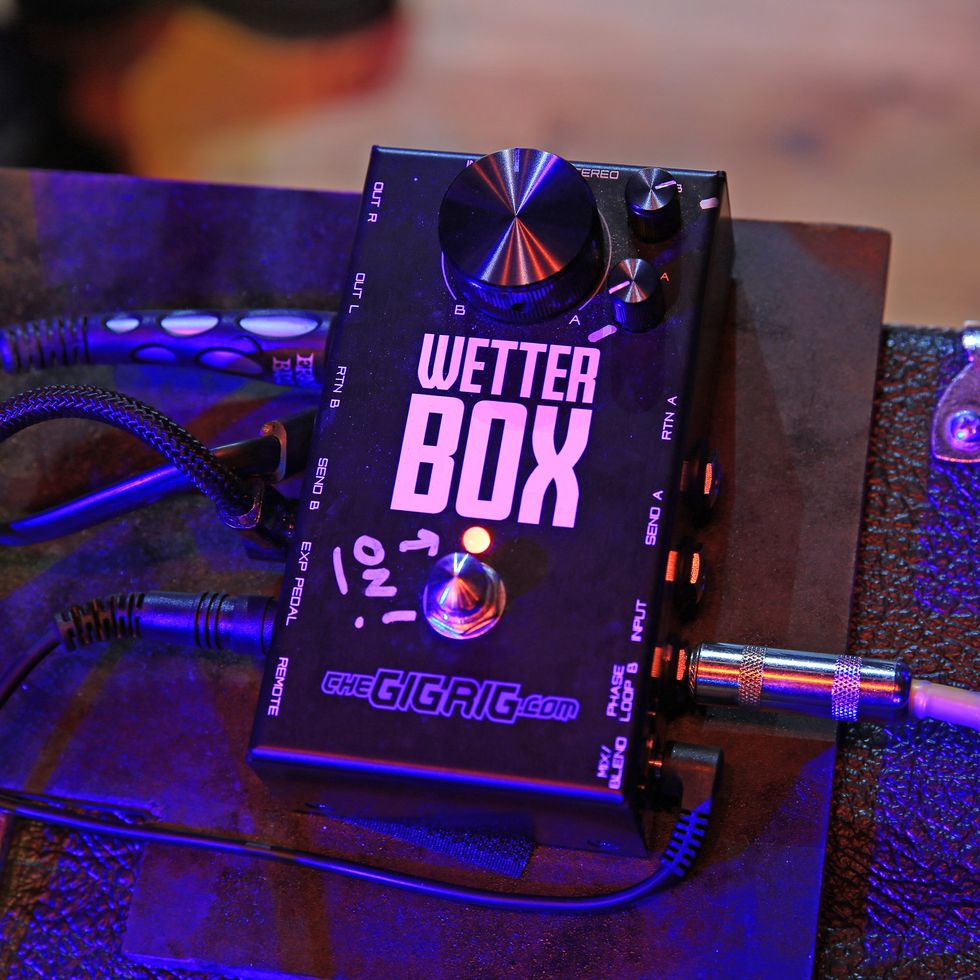
Perched atop an amp head is a GigRig wetter box, which allows Steve to fade reverb or delay into his dry-signal cabinet. The reverb and delay are generated by two adjacent TC Electronic Flashback pedals (using his own TonePrint settings) and a TC Hall of Fame reverb.
The Bass-ics
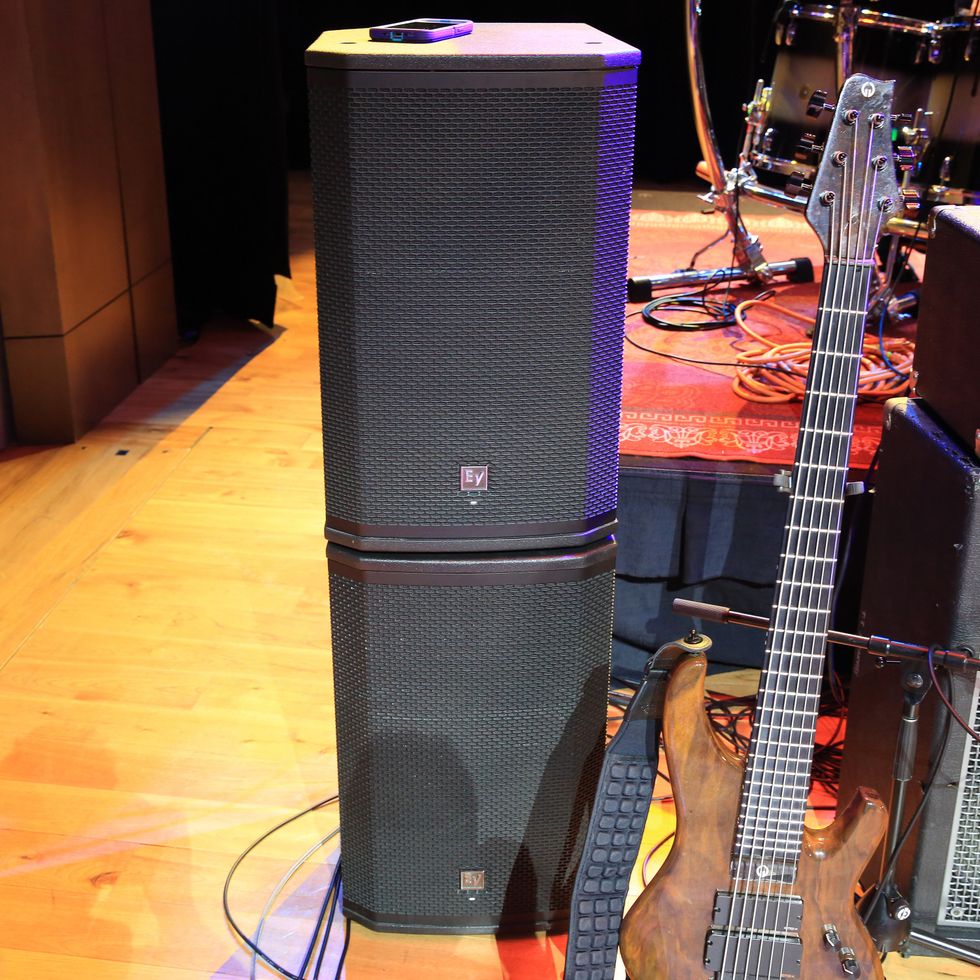
Two key components of Andy’s rig are his main G. Gould 6-string bass and these flat-response EV monitors, which serve as his instrument’s audio feed on stage. Between them is a Line 6 Helix floor unit—the sonic spine!
Good as Gould
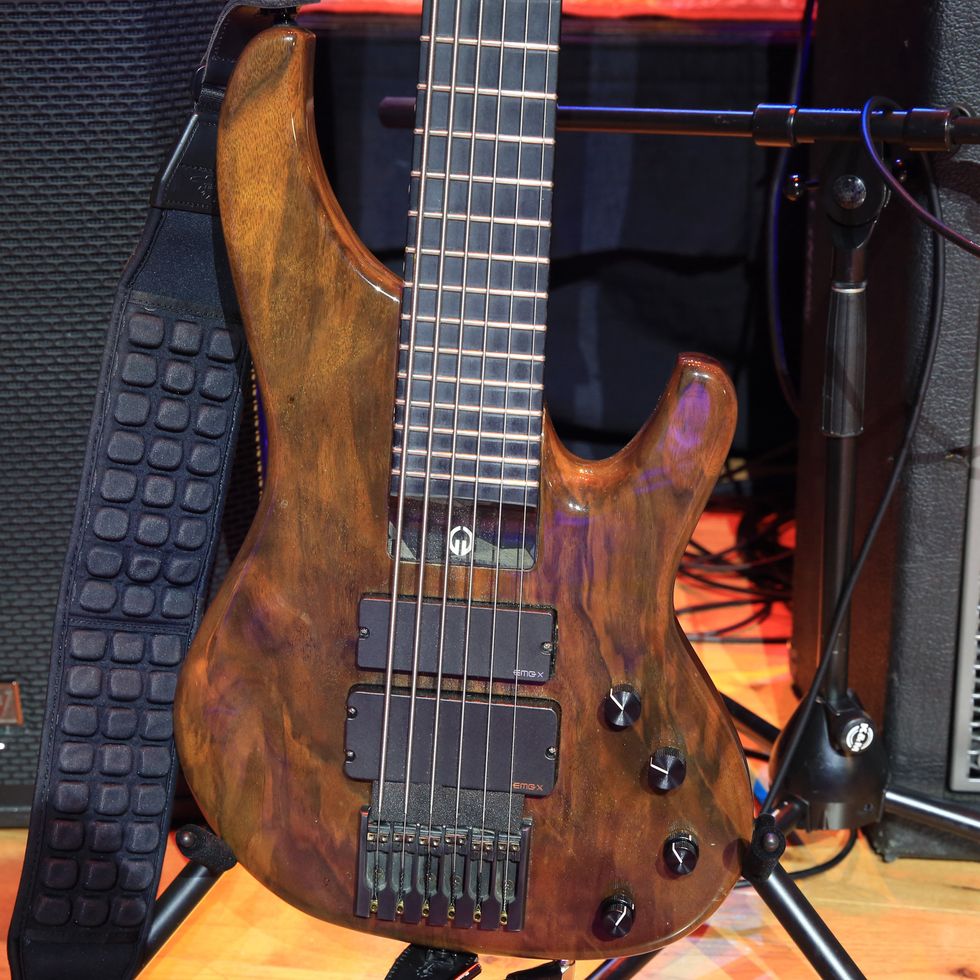
The G. Gould was custom-made for Andy about six years ago. Despite being a 6-string, it has a 5-string neck, because he plays with a pick and prefers tight string spacing. It has a pair of EMG pickups. The neck is graphite, made by Goeff Gould, and it has two volume controls and a coil-splitter.
Second Bass
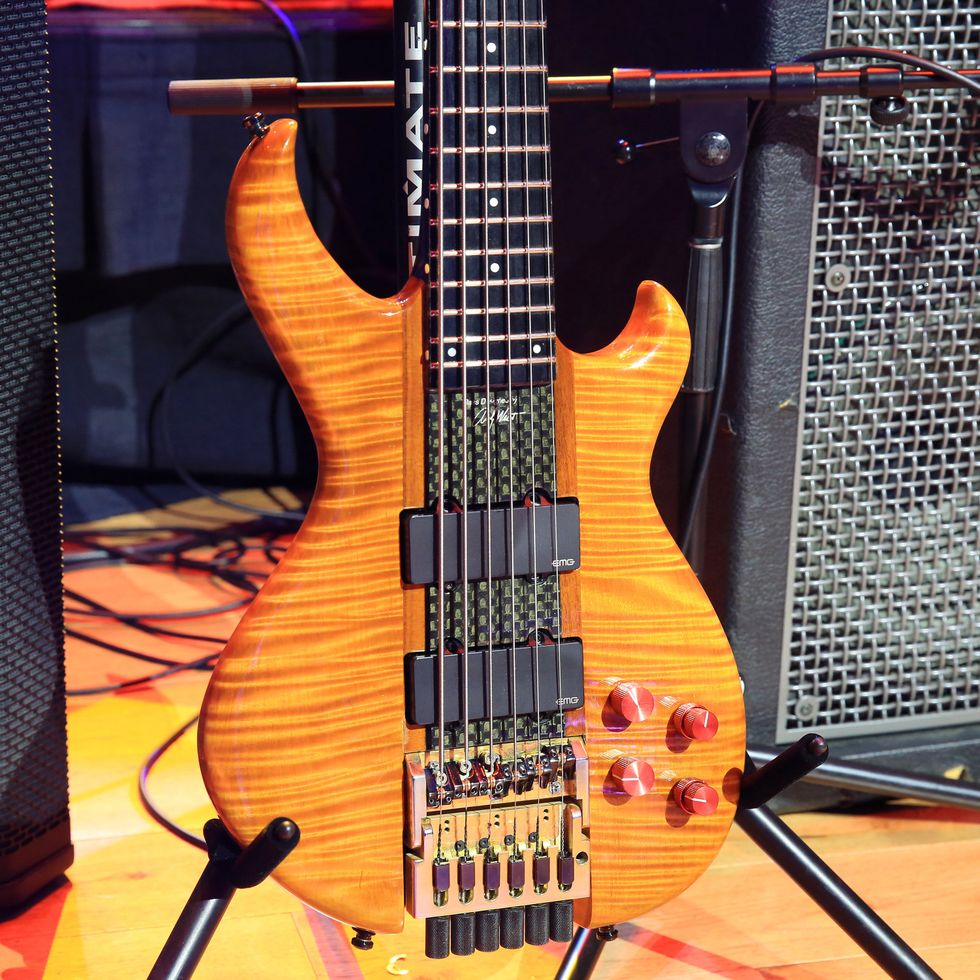
Built in 1985, this bass was designed by Andy and Geoff Gould, who was the founder of Modulus Graphite guitars. It has a graphite neck and originally had a tremolo bridge, but it started to crack the neck, due to its additional tension, so Andy had a wood block inserted plus a more conventional 6-string bass bridge. It has EMG pickups, too. The robust flame-maple finish is killer.
What's My Line 6?
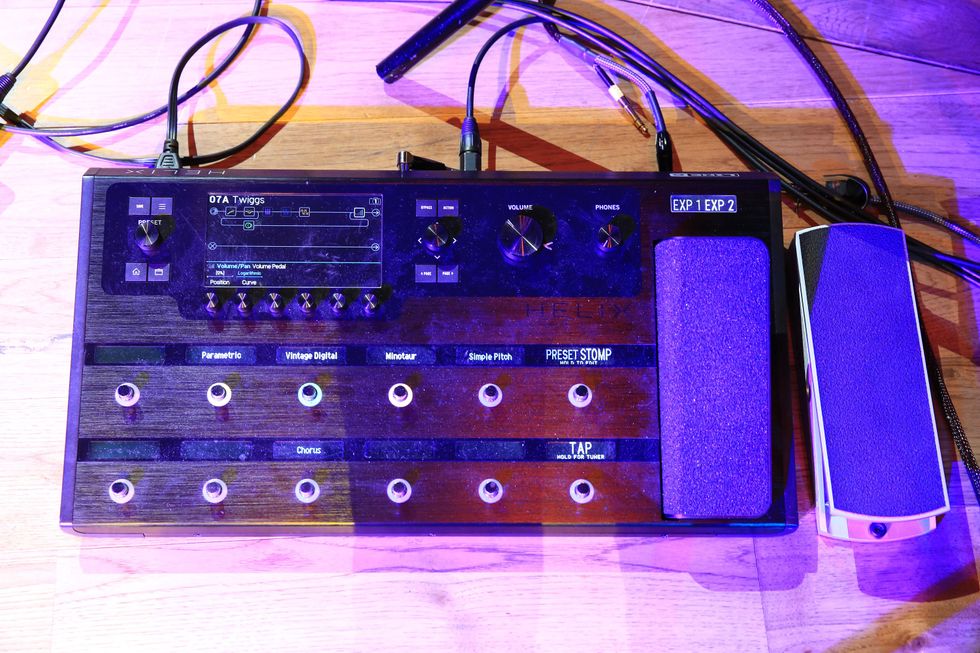
Andy’s amp is a Line 6 Helix floor model and he uses a few key tones, with a lot of midrange focus, some chorus, a lower octave, and overdrive—“all really subtle,” he observes. And the signal goes directly to the EV monitors onstage. They have two 12" speakers and tweeters, and the signal also goes direct to house, of course.
Shop Dixie Dregs' Rig

Roland GK-3 Divided Pickup
Engl Steve Morse Signature 100-Watt Amps
ENGL Amplifiers E412VSB 240-watt 4 x 12-inch Amplifier Cabinet
Roland GR-55 Synthesizer
Keeley Compressor
TC Electronic Flashback
TC Electronic Hall of Fame Reverb
Ernie Ball 2023 Super Slinky Paradigm Electric Guitar Strings - .009-.042
Line 6 Helix Guitar Multi-effects Floor Processor
Electro-Voice ZLX-12P-G2 1000W 12-inch Powered Speaker Pair
